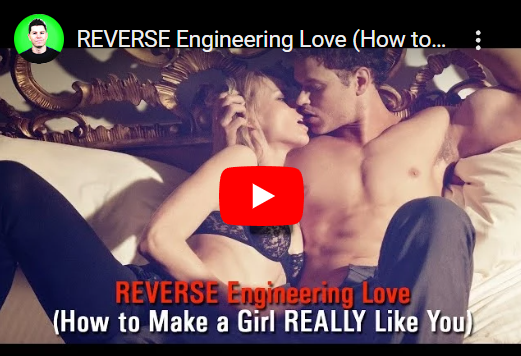How does “Unlock the Scrambler” suggest transitioning out of the “Scrambler” phase?
“Unlock the Scrambler” suggests transitioning out of the “Scrambler” phase once the desired attraction and emotional connection have been established. The transition is important for moving the relationship from the more strategic, tension-building phase of the Scrambler technique to a healthier, more stable, and genuine romantic relationship. Here’s how the program recommends making this transition:
1. Recognize the Signs of Success
- Acknowledging Positive Changes: Before transitioning, it’s important to recognize the signs that the Scrambler technique has worked. This includes increased attention, emotional engagement, and signs of attraction. When these indicators are consistently present, it’s a signal that it’s time to move out of the Scrambler phase.
- Evaluating Mutual Interest: The program advises ensuring that the mutual interest is strong. Both parties should be equally invested in the relationship before transitioning to the next phase. This means that the woman is not only responding positively but also initiating contact, showing affection, and expressing her desire to deepen the relationship.
2. Gradually Reduce Unpredictability
- Stabilize the Interaction: One of the first steps in transitioning is to gradually reduce the level of unpredictability in interactions. While unpredictability was key to creating intrigue and attraction, maintaining it indefinitely can lead to confusion or instability. The program suggests stabilizing the interaction by becoming more consistent and reliable in communication and behavior.
- Increase Availability: Begin to be more consistently available, making time for her and showing that she can count on you. This helps build trust and moves the relationship towards a more secure and comfortable phase.
3. Shift to Open Communication
- Honesty and Transparency: The transition phase involves increasing honesty and transparency in communication. This means being more open about feelings, intentions, and expectations. The program encourages initiating deeper conversations about where the relationship is heading, which can help solidify the bond.
- Expressing Genuine Interest: It’s important to start expressing genuine interest in her feelings, thoughts, and life. This goes beyond the strategic moves of the Scrambler phase and focuses on building a real emotional connection.
4. Build Emotional Intimacy
- Focus on Emotional Connection: After the Scrambler phase, the program suggests focusing on deepening emotional intimacy. This can involve sharing more personal stories, discussing future goals, and creating shared experiences that strengthen the bond.
- Encourage Vulnerability: Both parties should feel comfortable being vulnerable with each other. Encouraging this openness is key to transitioning into a more committed and emotionally fulfilling relationship.
5. Establish Consistent Affection
- Regular Displays of Affection: As the relationship stabilizes, consistent displays of affection—both physical and verbal—become important. This helps reinforce the emotional connection and assures the woman that the relationship is moving in a positive direction.
- Affirming the Relationship: The program advises affirming the relationship by acknowledging how much you enjoy being with her and expressing gratitude for the relationship. This helps move the relationship from the initial stages of attraction to a deeper, more committed phase.
6. Plan for the Future
- Discussing the Future: Transitioning out of the Scrambler phase involves starting to discuss future plans together. This can range from simple things like planning future dates or trips to discussing longer-term goals. These conversations help solidify the relationship and indicate a commitment to a future together.
- Setting Expectations: It’s important to set clear expectations about what both parties want from the relationship moving forward. This could include discussing exclusivity, relationship goals, and how both individuals envision their future together.
7. Becoming More Dependable
- Building Trust: The transition phase involves becoming a more dependable and trustworthy partner. This means following through on promises, being supportive, and consistently showing up for the relationship. Trust is foundational for a long-term relationship, and this phase is about building and reinforcing that trust.
- Providing Stability: The Scrambler phase often involves creating emotional highs and lows to build attraction. Transitioning out of this phase involves providing more stability and security in the relationship, making it a safe and reliable space for both parties.
8. Deepening the Commitment
- Moving Towards Commitment: As you transition out of the Scrambler phase, the program suggests gradually moving towards a more committed relationship. This might involve having discussions about exclusivity, introducing each other to friends and family, or even discussing long-term plans like living together.
- Reinforcing Mutual Investment: Both parties should feel equally invested in the relationship. Reinforcing this mutual investment ensures that the relationship continues to grow in a positive direction.
9. Maintaining Attraction While Building Stability
- Balancing Attraction and Stability: The program emphasizes the importance of maintaining the initial attraction while also building a stable relationship. This means continuing to do the things that sparked interest while also being a reliable and supportive partner.
- Keeping the Spark Alive: Even as you transition into a more stable phase, it’s important to keep the spark alive by continuing to plan fun activities, surprising each other, and maintaining a sense of excitement in the relationship.
Conclusion
“Unlock the Scrambler” suggests transitioning out of the Scrambler phase by gradually reducing unpredictability, increasing open communication, building emotional intimacy, establishing consistent affection, planning for the future, and deepening the commitment. This transition helps move the relationship from the strategic, attraction-building phase to a more stable, committed, and emotionally fulfilling partnership. The goal is to maintain the initial spark while building a foundation of trust, mutual respect, and long-term compatibility.

